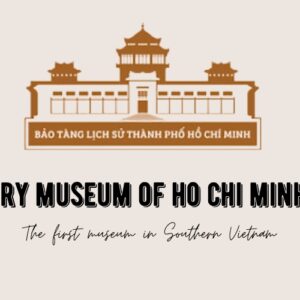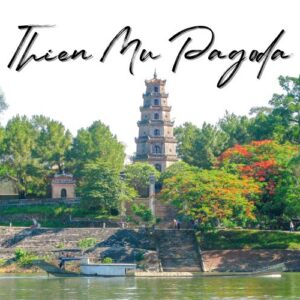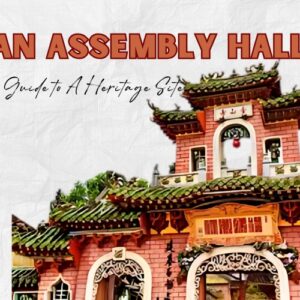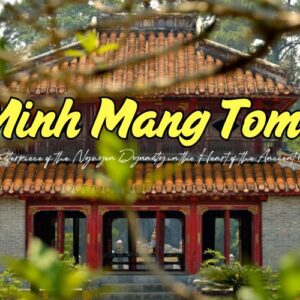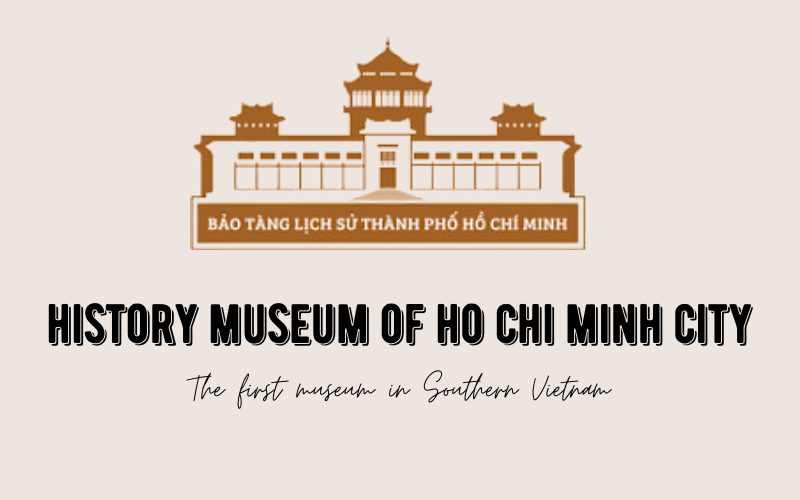
If you want to learn more about the history and culture of a city, there is no swifter way than exploring the museums. Coming to the Museum of Vietnamese History in Ho Chi Minh City, you will find a unique feeling when discovering this place. The impressive architecture and several precious treasures here will definitely provide you with a special experience that remains unparalleled elsewhere.
Essential Information for Tourists
Location of Museum of Vietnamese History
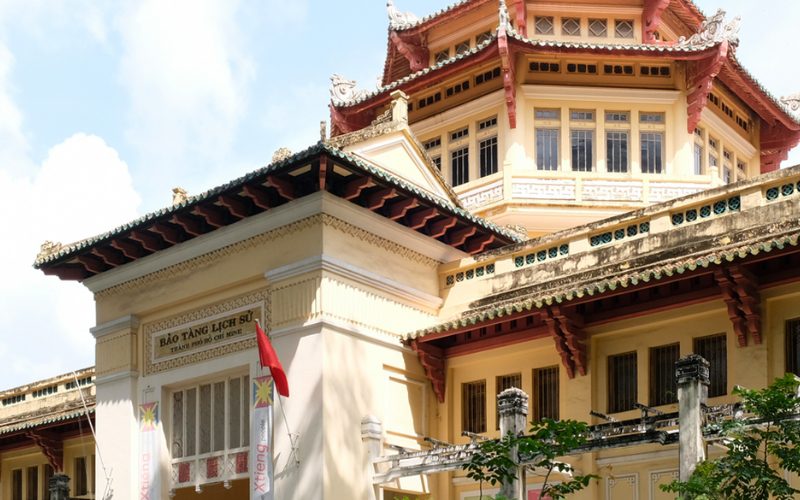
An outside look of the museum
The Museum of Vietnamese History is located at No. 2 Nguyen Binh Khiem Street, Ben Nghe Ward, District 1, Ho Chi Minh City. Situated in the center of the city, you can easily get to this destination by several means of transportation.
Calling a taxi or booking a car via ride-hailing apps might be the easiest way. Just tell the driver the address, and he will bring you to this place immediately. However, to avoid unwanted risks, you can make a safer choice: renting a private car. You will have a driver for yourself during the trip. He will bring you and pick you up anywhere you wish anytime you want.
Opening Hours & Entrance Fees
The Museum is open from Tuesday to Sunday, operating time from 8:00 AM to 11:30 AM in the morning and from 1:00 PM to 5:00 PM. However, please keep in mind that the Museum is closed on Monday, so be aware when scheduling to visit this location.
You will have to pay an amount of 30,000 VND for the entrance fee. Free tickets will be applied to children under 6 years old, and a 50% discount will be applied to children aged from 6 to 16 years old and students of the Vietnamese education system. You can access the official website of this Museum here to learn more about the discount policy.
History of the Museum
The History Museum of Ho Chi Minh City was formerly known as the Blanchard de la Brosse Museum (named after the Governor of Southern Vietnam). It was established in 1929 and stands as the first museum in Southern Vietnam.
In 1956, the Museum was named “National Museum of Vietnam” in Saigon. This place displayed the ancient arts from various Asian countries. On August 23rd, 1979, the Museum was officially renamed to History Museum of Ho Chi Minh City.
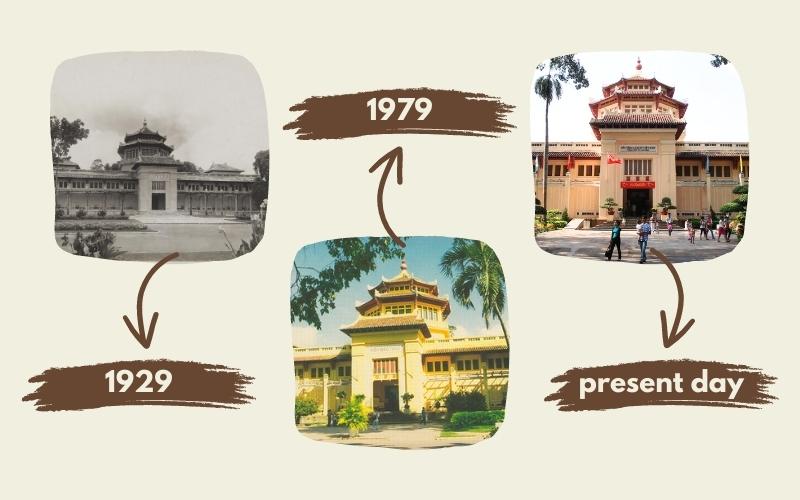
The Museum through Different Periods
The buildings in this museum were recognized as National Architectural and Artistic Heritage in 2012. The architecture, combining Eastern and Western influences, forms a perfect structure that complements the surrounding landscape.
Currently, the Museum of Vietnamese History holds more than 40,000 artifacts with multiple collections originating from numerous countries and ethnic groups. The Museum also serves as a workplace for many experts and researchers in Vietnamese history, culture, and society.
Magnificent Architecture of History Museum of Ho Chi Minh City
Ancient Design of the Front Building
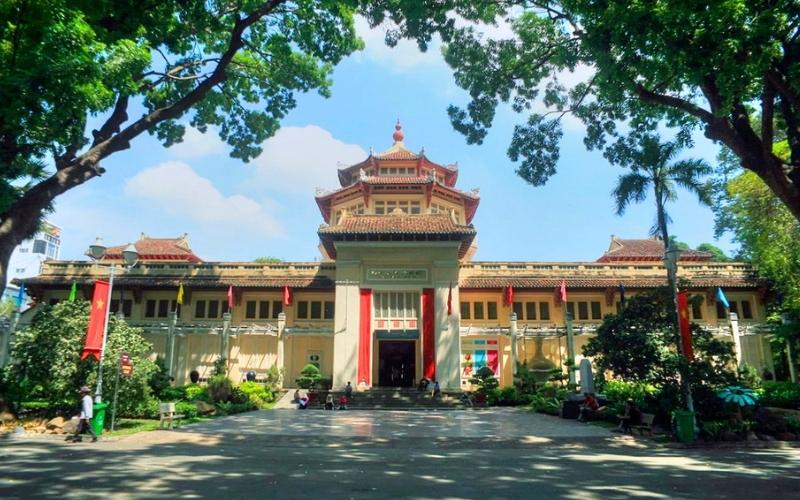
The Front Building
The front building of the History Museum of Ho Chi Minh City used to be the Blanchard de la Brosse, designed by the architect Auguste Delaval in a classical architectural style. The overall layout consists of an octagonal tower in the center as a focal point and symmetrical axes for the two flanking wings. Generally, the architecture of this building strongly exhibits an Indochinese style.
The decorations were crafted from various materials such as wood, iron, and cement. Although made from different materials, all patterns are reminiscent of many contemporary classical architectural structures. Each detail holds a distinct meaning, but collectively, they all convey positive intentions. This is the intangible cultural heritage hidden within the building, particularly in the architectural decorative patterns. These motifs also reveal the cultural exchange between Vietnam and France, contributing to the museum’s architectural appearance that blends an Eastern character with Western influences.
Typical Indochinese Architecture of the Behind Building
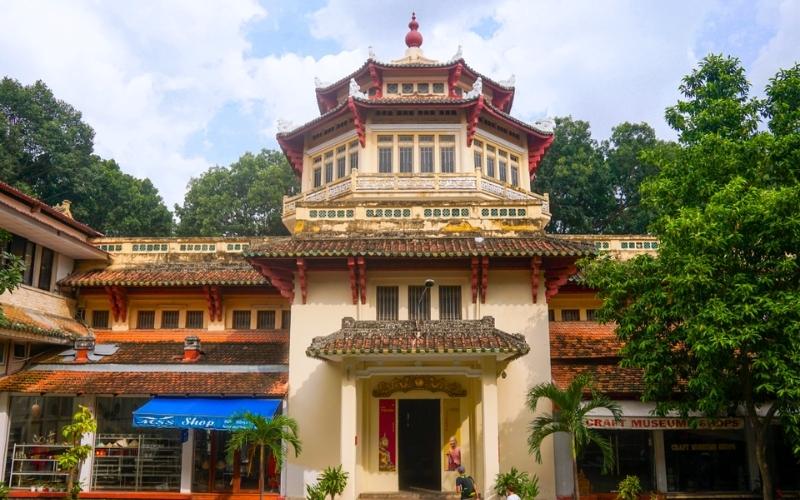
The Behind Building
The behind building was designed by architect Nguyen Ba Lang and was constructed adjacent to the previous one. This building takes the form of a U shape, covering an area of 1000m².
Overall, the construction incorporates designs that suit the function of a museum, including elevated floors and thick walls to resist moisture and provide good load-bearing capacity. The high ceilings feature skylights near the roof to utilize natural light for illuminating the rooms. It can be said that the History Museum of Ho Chi Minh City is a structure that has been used according to its original design purpose.
Highlights of the Museum of Vietnamese History
National Treasures Preserved in the Museum
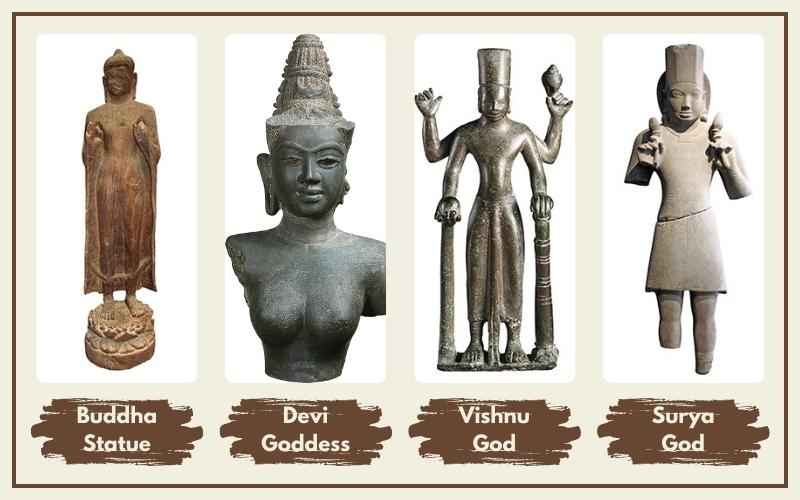
Some National Treasures Preserved in the Museum
The Museum of Vietnamese History in Ho Chi Minh City now conserves 12 national treasures. Particularly, the preserved treasured belong to the Buddhist and Hindu arts of the Phu Nam – Oc Eo culture and the Champa culture. These are the two cultures that flourished in ancient times in Southern and Central Vietnam. These artistic works not only reflect historical and cultural values but also showcase the aesthetic values of contemporary techniques of Vietnam’s ethnic components in the past. This contributes to enriching the treasury of Vietnam’s cultural heritage.
Co Khi – Collection of the Nguyen Dynasty’s Antiques
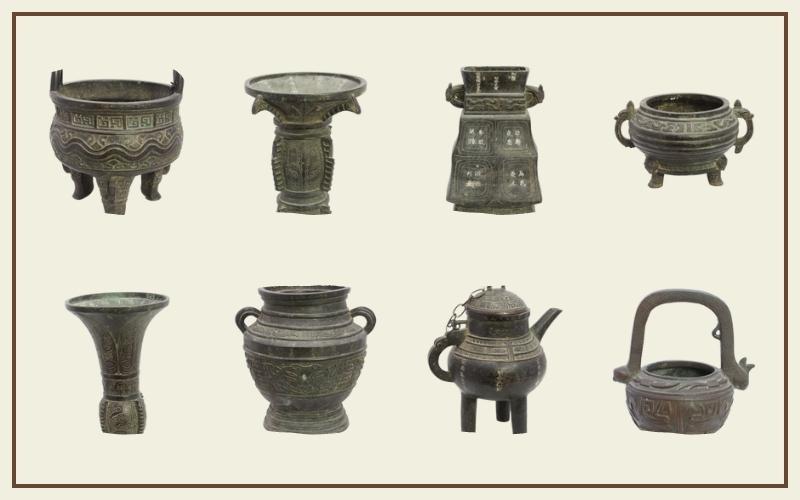
Some Artifacts of the Co Khi Collection
In 1838, Minh Mang Emperor changed Vietnam’s country title to Dai Nam. At the end of that year, he issued a decree to cast Co Khi. It is a collection of 33 types of vessels made of brass imitating objects from the Tam Dai Dynasty. People used those vessels for rituals and inscribed classical Chinese characters derived from the fundamental works of Confucianism.
The collection of the Nguyen Dynasty showcases 12 objects. Even though it doesn’t fully represent in terms of quantity, it reveals the uniqueness of this form of casting. Therefore, it offers insight into the grand ideas of the monarch in governing the country and the people.
Exhibitions in the History Museum of Ho Chi Minh City
Permanent Exhibitions
History of Vietnam from the Prehistory to the Nguyen Dynasty
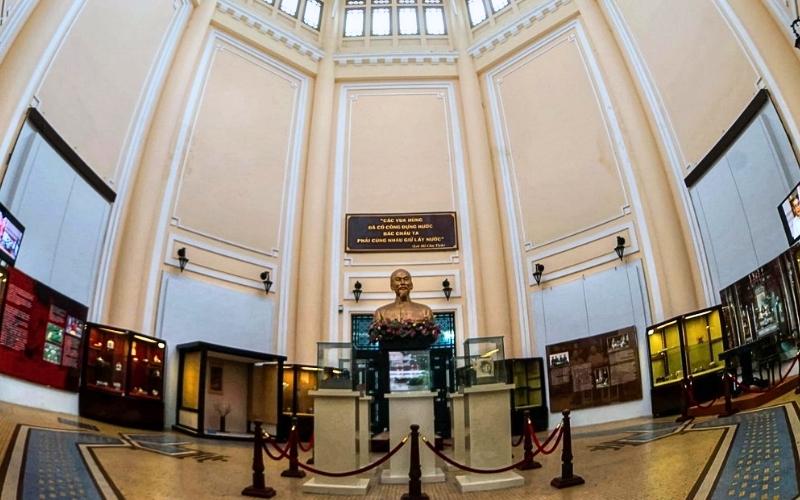
Exhibition of History of Vietnam
To showcase the History of Vietnam from its Prehistory to the Nguyen Dynasty, the exhibition space is divided into 8 different areas associated with 8 periods of Vietnam’s history.
- Prehistory period: From 500,000 years ago to the year 2879 B.C
- The first period of founding and struggling for independence: From the year 2879 B.C to 938
- Ngo – Dinh – Early Le Dynasties: From 939 to 1009
- Ly Dynasty: From 1009 to 1225
- Tran – Ho Dynasty: From 1226 to 1407
- Later Le – Mac – Later Le Restoration Dynasties: From 1428 to 1778
- Tay Son Dynasty: From 1771 to 1802
- Nguyen Dynasty: From 1802 to 1945
Cultures in Southern Vietnam and Some Asian Countries
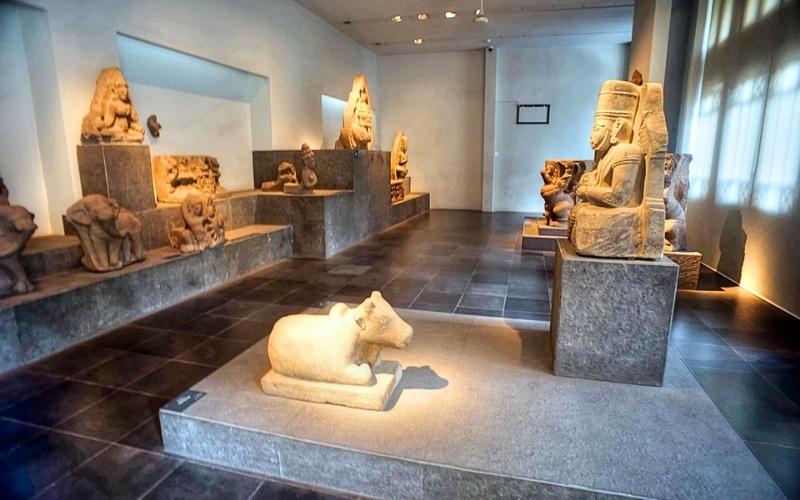
Exhibition of Cultures in Southern Vietnam and Some Asian Countries
Coming to the exhibition demonstrating cultures in southern Vietnam and other Asian countries, you will find 9 different zones showcasing multiple precious artifacts.
- Champa Culture: From the 2nd century to the 17th century
- Oc Eo Culture: From the 1st century to the 7th century
- Cambodian stone carvings: From the 9th century to the 13th century
- Duong Ha collection
- Asian ceramics
- The mummified body of Xom Cai: During the 19th century
- Vuong Hong Sen collection
- Minority culture from Southern provinces
- Buddhist statues of Asian countries
Outdoor Area of the Museum
In the outdoor area of the Museum of Vietnamese History in Ho Chi Minh City, there are displays of artillery guns. These are long-range weapons that merged in Europe around the 14th century, with their predecessors being stone-throwing machines from ancient times. This type of gun is often large in size, heavy in weight, and cast from copper, iron, or bronze. The ammunition consists of solid iron or steel balls that are fired using the propulsion force of the gunpowder charge.
Temporary Exhibitions
Several temporary exhibitions have been organized successfully in the History Museum of Ho Chi Minh City. Moreover, they even managed to bring more understanding of Vietnam to tourists coming to the Museum. Some notable exhibitions include “Vietnamese Paper Money through Different Periods” and “The Twelve Zodiac Animals in Eastern Culture.”
Regulations of the Museum
The Museum of Vietnamese History is a worth-visiting place when you travel to Ho Chi Minh City. However, to ensure the ultimate visit to this destination, you should follow the below notes:
- Dress appropriately and neatly
- Do not bring flammable or explosive items, weapons, or litter that could pollute the environment
- Do not bring food or drinks into the Museum
- Maintain cleanliness and avoid making loud noises
- Do not touch the historical artifacts and exhibits
- Do not enter restricted areas
The History Museum of Ho Chi Minh City is not only a uniquely designed construction but also a place that holds the cultural heritage of Vietnam. Why don’t you create your own trip today and add this destination to your must-visit list? If you encounter any difficulties in planning your vacation, feel free to contact us for the best travel experience.

